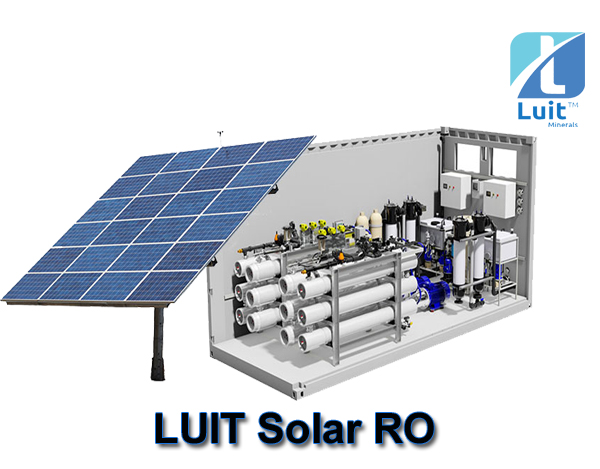Luit Solar Water RO Purifier System works by using solar energy to power the treatment processes, such as filtration, disinfection, and reverse osmosis. The solar panels generate electricity, which is used to operate the pumps, motors, and other equipment needed to treat the water. The benefits of a solar operated water treatment plant include reduced energy costs, decreased carbon emissions, increased independence from the power grid, and improved access to clean water in remote areas.
OPERATION PROCESS
- Solar Panels: The system starts with solar panels, which convert sunlight into electricity. These panels are typically installed on a suitable location where they can receive maximum sunlight exposure throughout the day.
- Power Generation: The electricity generated by the solar panels is used to power the entire reverse osmosis system. This includes the pumps, filters, and other components necessary for the purification process.
- Pre-Treatment: Before the water enters the reverse osmosis membrane, it usually goes through pre-treatment processes to remove larger particles, debris, and other contaminants. This may involve filtration, sedimentation to ensure that the water is clean enough for the reverse osmosis process.
- Reverse Osmosis: The pre-treated water is pressurized and then forced through Luit semi-permeable membrane in the reverse osmosis unit. This membrane allows water molecules to pass through while blocking the majority of dissolved salts, minerals, and other contaminants. As a result, purified water is collected on one side of the membrane, while concentrated brine (containing the rejected contaminants) is flushed away.
- Storage and Distribution: The purified water is then stored in tanks or reservoirs before being distributed to consumers through a network of pipes or other distribution channels. The storage capacity ensures a continuous supply of purified water even when solar energy is not available (e.g., during cloudy days or at night).







Reviews
There are no reviews yet.